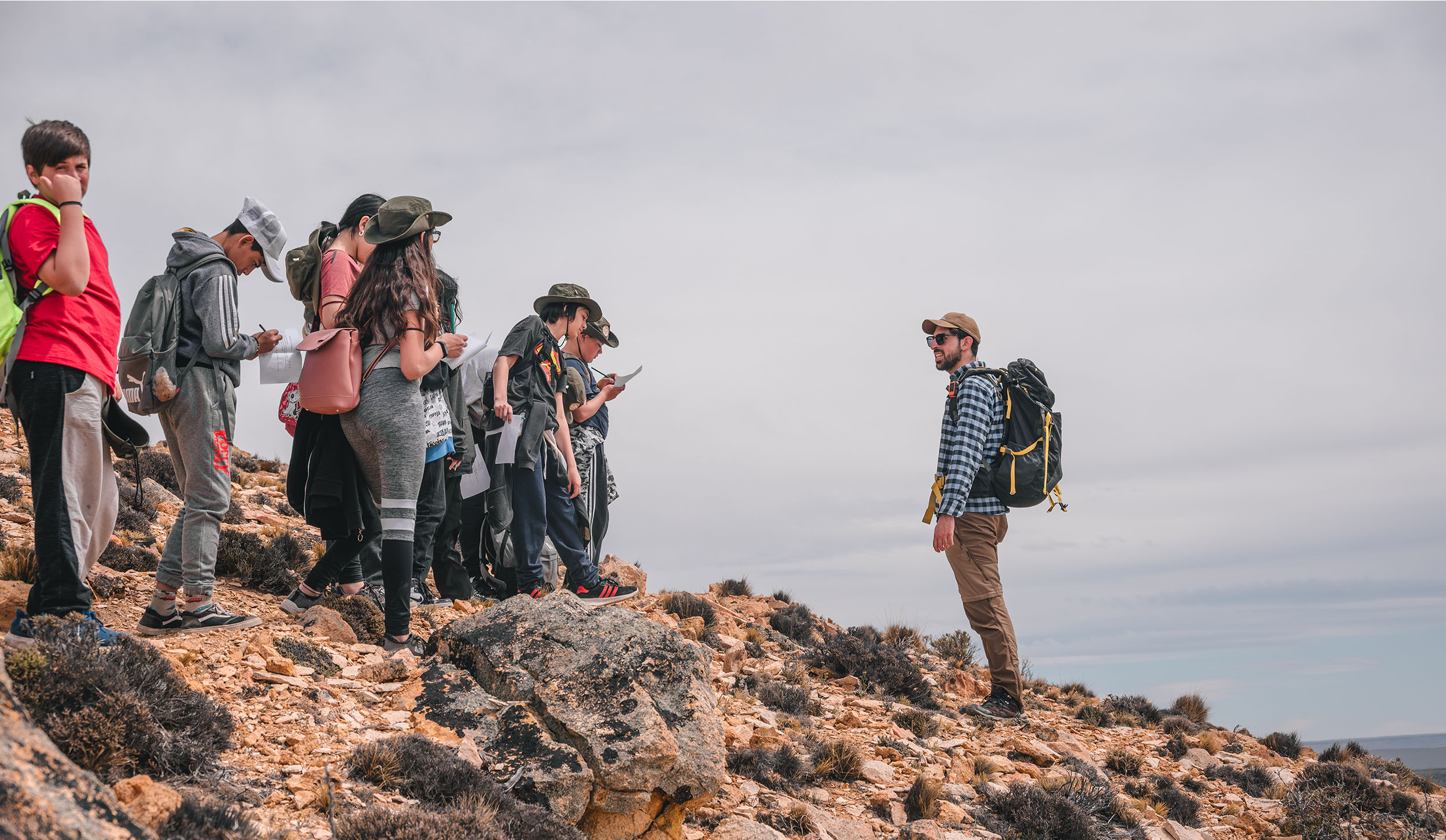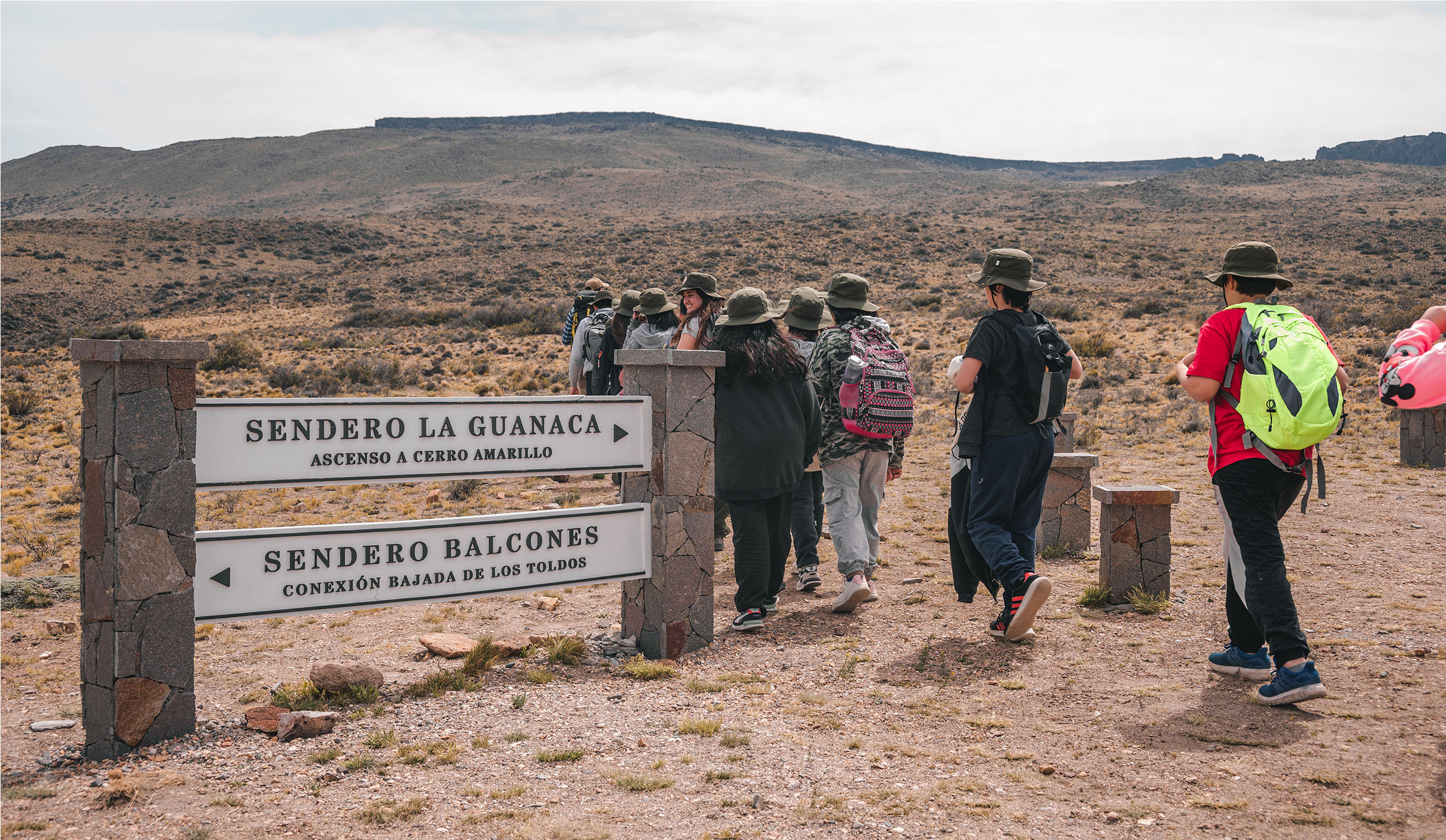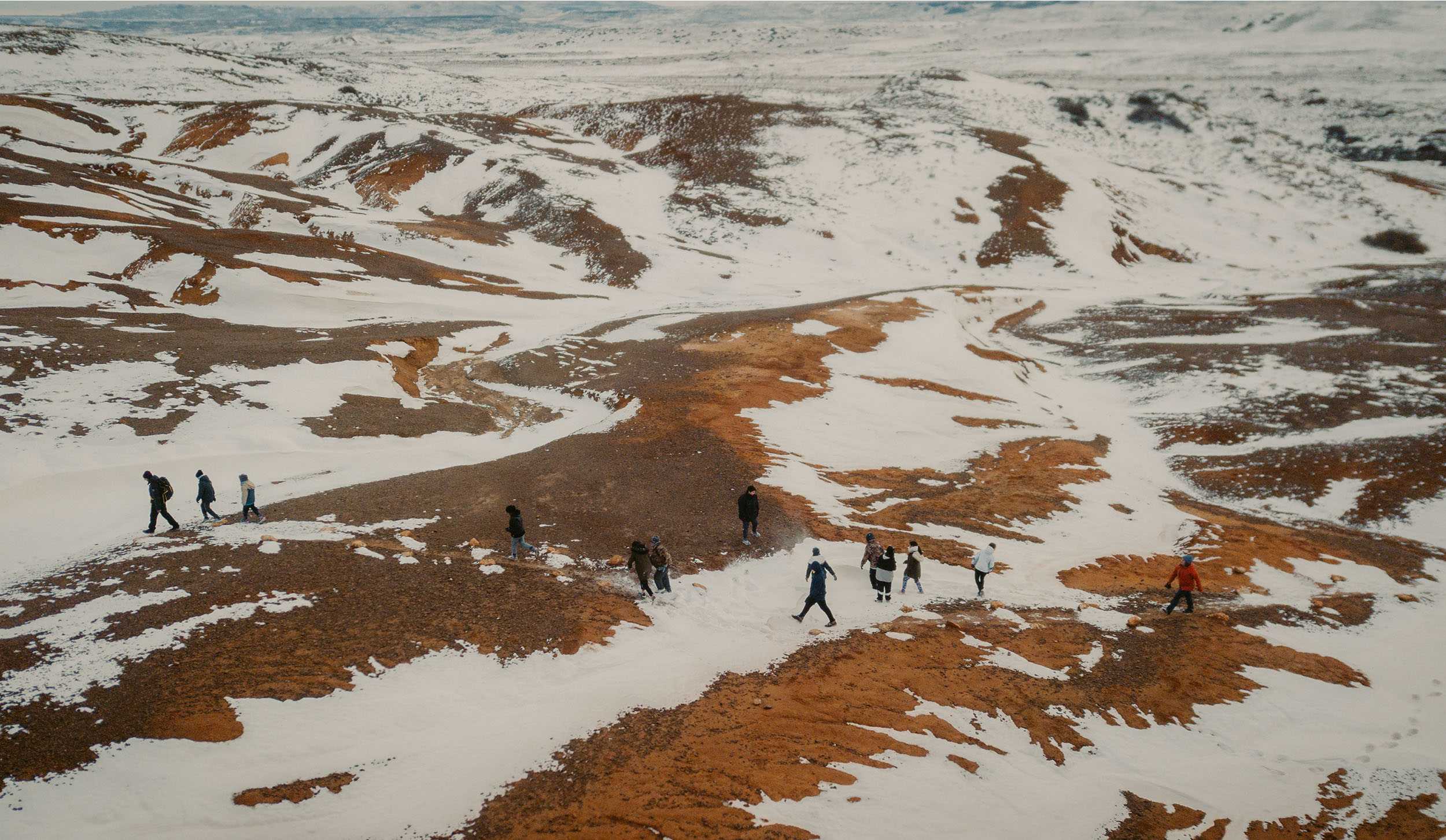The Patagonia Park region includes the National Park and three public access areas with different conservation categories, called ‘portals’ or ‘entrances’, which protect plateaus, steppes, canyons, and wetlands. In this impressive landscape, visitors can observe a variety of wildlife inhabiting the area including lesser rheas, guanacos, condors, and pumas.
Since 2011, Rewilding Argentina has been working alongside other nature conservation organizations to extend the protected area of Patagonia Park Argentina and restore its ecosystems through rewilding efforts. Additionally, we strive to support wildlife and local communities by promoting economies based on nature tourism.
Beyond the mountain range lies the Patagonia National Park in Chile. Our vision is to create a vast park and cross-border /binational nature tourism attraction, transcending human borders prioritising the conservation of the natural and cultural heritage of Patagonia.
Patagonia Park Argentina’s history
2007
The residents of the town of Los Antiguos demanded the protection of the Lake Buenos Aires basin to prevent gold mining projects from prospering. At that time, the organizations Aves Argentinas and Ambiente Sur were conducting surveys on the hooded grebe, a bird native to the region found in the western mountain ranges of Santa Cruz, and were advocating for the establishment of a national park in one of the crucial areas to conserve these species.
2009
Technical teams, with support from Aves Argentinas, Ambiente Sur, and Rewilding Argentina, detected public lands on the Lago Buenos Aires plateau that contained vital habitats for the grebe.
2012-2014
Rewilding Argentina acquired and donated the El Sauco ranch to protect one of the most important nesting sites for the hooded grebe. The following year, the province of Santa Cruz ceded jurisdiction and ownership of land in favour of the National State and so, in 2014, the Patagonia National Park was created into law.
2017
The arduous work of restoration and development of infrastructure began in La Ascensión, which had previously been a cattle ranch. In December of 2017, the Foundation opened the area for public use.
2019
Rewilding Argentina donated the land for the creation of the Cueva de las Manos (Cave of the Hands) Provincial Park, located in the Cañadón Pinturas entrance, which houses significant archaeological sites with cave paintings that are over 9,000 years old.
2019
Rewilding Argentina donated land to create the La Ascensión National Wild Reserve, which is now under the management of the National Parks Administration. The reserve is open to the public free of charge and features a network of trails that span forty kilometers, providing access to breathtaking sites like Lake Buenos Aires and its neighboring plateau.
The Cañadón Pinturas entrance was inaugurated, with free public access, offering over forty kilometers of trails to explore the breathtaking landscapes and wildlife. Additionally, visitors can now access the Cueva de las Manos archaeological site, which is a Unesco World Heritage Site.
2020 - 2022
Rewilding Argentina, in partnership with Freyja Foundation, has made significant progress in the Cañadón Pinturas entrance. More than fifty kilometers of trails have been established, and rewilding efforts are ongoing to restore native species. Additionally, construction has commenced on the Elsa Rosenvasser Feher Interpretation Center and Planetarium, which will open in 2023.
2023
The Elsa Rosenvasser Feher Interpretation Center and Planetarium was inaugurated. Donated by the renowned Argentine physicist who gave it its name, the center explores—through various exhibits—the formation of the continents, human evolution and the environmental crises it has originated, and rewilding and the economy of nature as strategies for reversing them. The tour concludes at the planetarium, where visitors can view interpretive projections of the Patagonian sky.
2024
Cañadón Caracoles Gateway was inaugurated. This new public access area occupies a spectacular portion of the Caracoles Canyon, whose channel was formed by glacier activity some 15,000 years ago. It can be accessed by car through the road that connects Route 40 with Cueva de las Manos, or by foot from the network of trails of Cañadón Pinturas Gateway along a 12-km route framed by astonishing landscapes that invite imaginations to take flight. It boasts a rock climbing area with numerous routes of varying difficulty levels, campsites, dry bathrooms, and an information center.
Rewilding Patagonia
Rewilding is a strategy that restores the integrity of natural ecosystems so that they become complete and functional again. That means they contain populations of all the species that historically evolved there.
Rewilding Argentina, with the support of the Freyja Foundation, is dedicated to restoring the ecosystem in Patagonia Park Argentina. They achieve this by monitoring and managing wildlife, restoring environments, eradicating exotic species, and spreading awareness about their efforts to recover key species in the area.
The Santa Cruz region’s Patagonian Steppe, which is partially protected by Patagonia Park, has not been spared from the extinction and population reduction processes that have affected the rest of Argentina. The huemul and the southern river otter have disappeared at a regional level, while the Wolffsohn’s viscacha, coypu, and austral rail have undergone local extinction, reducing their numbers and disrupting population connectivity. Other species such as the puma, guanaco, lesser rhea, and Andean condor, which are key representatives of Patagonia’s terrestrial wildlife, have also experienced significant declines in their populations.
The ecosystem has been significantly affected by changes in crucial ecological processes, including predation and migrations. Our objectives in arid Patagonia are to reintroduce species that are currently missing and enhance the population of species that have been greatly reduced. Our ultimate aim is to restore the typical ecological processes of the steppe.
We are currently working towards recovering the following species in Patagonia Park, Argentina
Puma
Architect of the ecosystem
The ecosystem’s functionality heavily relies on the existence of this large feline. At Cañadón Pinturas, we strive to emphasize the crucial ecological significance of this apex predator and shift the locals’ perception of it from being a foe to a friend.
Guanaco
Ancestral migrants
It is the largest herbivore in Patagonia and was of significant importance to the native people of the area. We work to restore the magnificent sights of the large migrations of this species.
Wolffsohn’s Viscacha
Sentinel of the canyon
Locally known as a squirrel, it lives in the crevices of the canyon and is nocturnal. We work to recover the declining population due to human interference such as hunting.
Coypu
Gardener of the wetlands
The loss of these large rodents is linked to humans hunting for their fur and the scarcity of aquatic vegetation. We work towards bringing the population back into the Pinturas River and the Caracoles Canyon.
Pampas Cat
Little predator
It is a versatile hunter that prefers terrestrial birds, mice and southern mountain cavies. We work on highlighting its ecological importance as one of the most efficient predators in regulating the presence of rodents.
Austral Rail
A small bird in the reed beds
This unusual bird lives in the Patagonia steppe wetlands and is largely unknown to locals. We endeavor to recover the reed beds that have been degraded in the hope of fostering new populations of the species.
Andean Condor
Scouter of the Andes
The Condor is the largest flying bird in the world; It has the ability to travel hundreds of kilometers in just one day with the help of warm air currents. Unfortunately, the population of this incredible bird has been rapidly declining due to the use of illegal poisons. We work to put an end to this harmful practice and protect these magnificent creatures.
Darwin’s Rhea
Walkers of the steppe
It can grow up to a meter high (39 inches). The male is in charge of the incubation and care of chicks. We work to end the threats that have resulted in the decline of their population within Patagonia Park.
Huemul Deer
The steppe deer
The huemul, a critically endangered deer due to hunting and the use of dogs in ranching, is being reintroduced to steppe valleys by our rewilding team.
Exploradores Youth Outdoor Program
The Patagonia Park Argentina Explorers Program, created and funded by Freyja Foundation and implemented by Rewilding Argentina, aims at encouraging curiosity and educating local youth about the area where they live and its incredible biodiversity—taking advantage of the trails that run through diverse landscapes and the wildlife species that inhabit the area. It is aimed at boys and girls between the ages of ten and thirteen from the towns of Perito Moreno, Los Antiguos, Bajo Caracoles, and Lago Posadas, in Santa Cruz in the hope of connecting them with nature and fostering future conservationists.
For more information
Whatsapp +54 9 2975 92-5266
Mail exploradores.parquepatagonia@gmail.com













